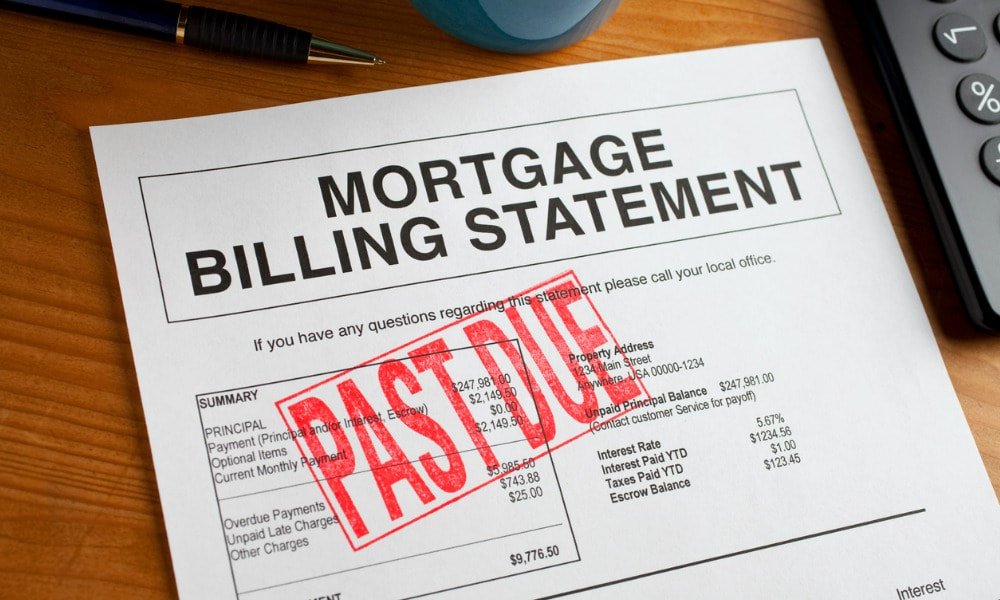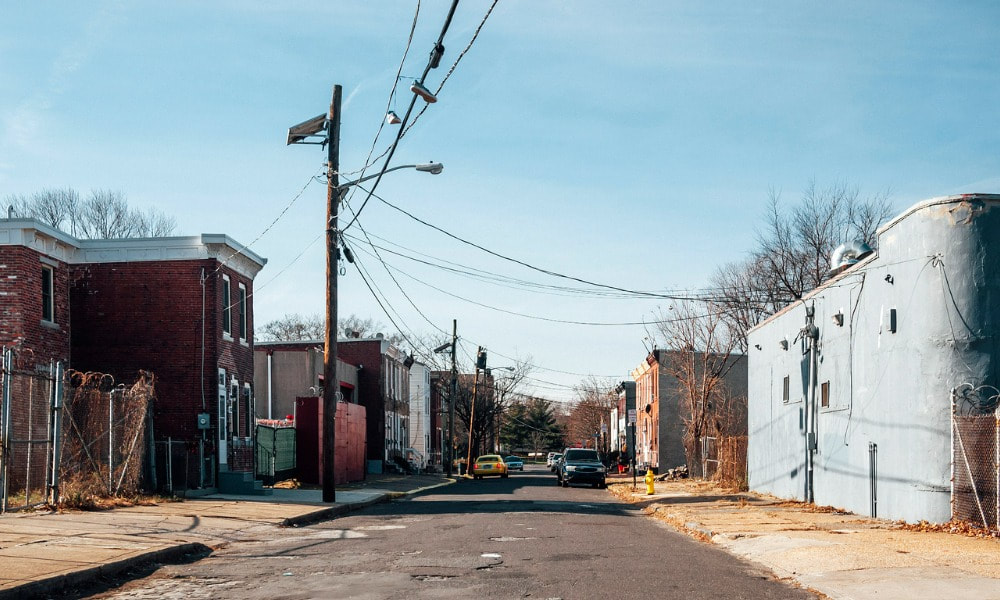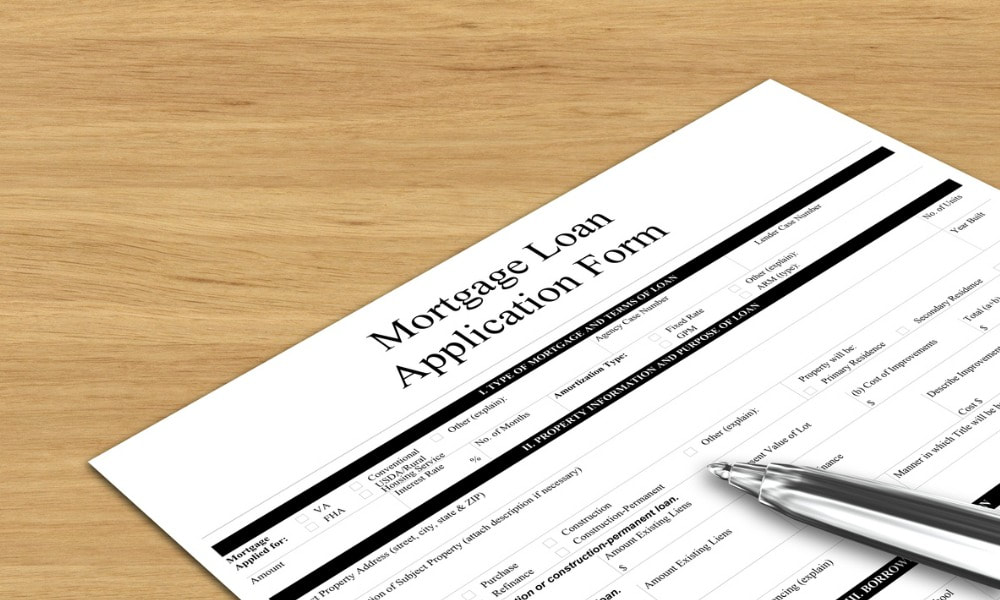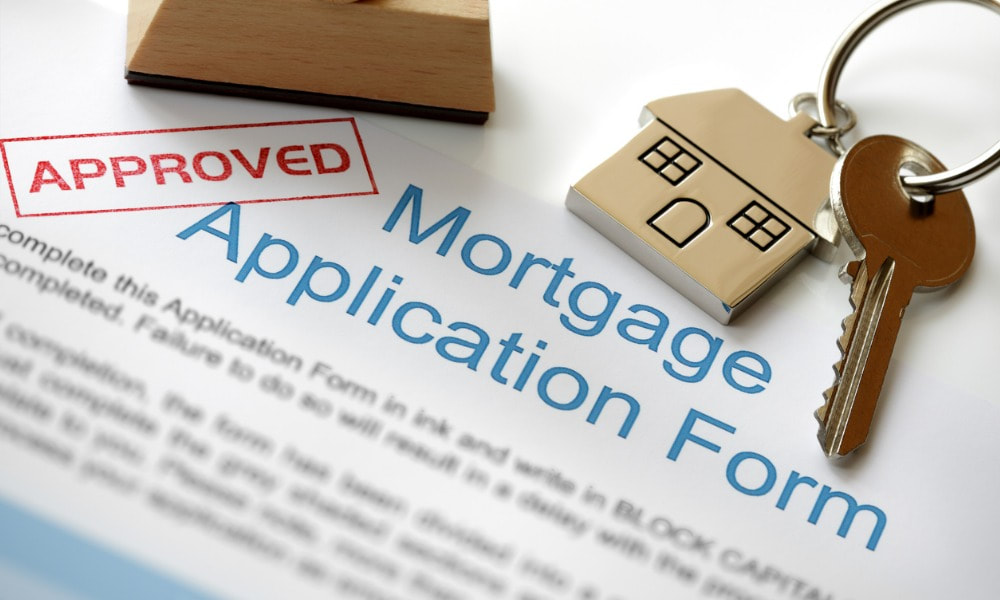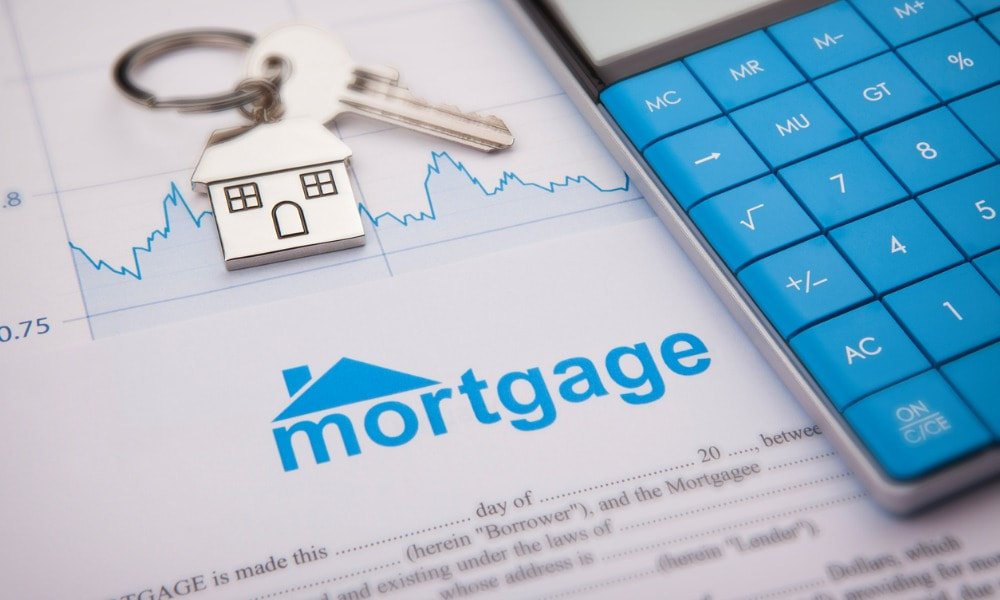|
Those forecasting a shallow downturn are "delusional", according to market observer.
Economist Nouriel Roubini said the US is facing a deep recession as interest rates rise and the economy is burdened by high debt loads, calling those expecting a shallow downturn “delusional.” “There are many reasons why we are going to have a severe recession and a severe debt and financial crisis,” the chairman and chief executive officer of Roubini Macro Associates said on Bloomberg TV Monday. “The idea that this is going to be short and shallow is totally delusional.” Among the reasons Roubini cited was historically high debt ratios in the wake of the pandemic. He specifically mentioned the burden for advanced economies, which he said continues to rise, as well as in some sub-sectors. That differs from the 1970s, he said, when the debt ratio was low despite the combination of stagnant growth and high inflation known as stagflation. But the nation’s debt has ballooned since the financial crisis of 2008, which was followed by low inflation or deflation due to a credit crunch and demand shock, he added. “This time, we have stagflationary negative aggregate supply shocks and debt ratios that are historically high,” said Roubini, who is nicknamed Dr. Doom for some of his dire predictions. “In previous recessions, like the last two, we had massive monetary and fiscal easing. This time around we are going into a recession by tightening monetary policy. We have no fiscal space.” Concern that rising interest rates will drive the economy into a recession has been escalating as the Fed tightens monetary policy aggressively to bring down the steepest inflation in four decades. Fed Chair Jerome Powell has said that failing to restore price stability would be a “bigger mistake” than pushing the US into a recession, which he has continued to maintain the nation can avoid. Powell and his colleagues are expected to approve another 75-basis-point hike this week after raising rates in June by the most since 1994. Policy makers are also expected to signal their intention to keep moving higher in the months ahead. “This time around, we have a confluence of stagflation and of a severe debt crisis,” Roubini said. “So it could be worse than ‘70s and post-GFC.”
0 Comments
Foreclosure starts also up.
The national mortgage delinquency rate increased by nine basis points in June, data and analytics firm Black Knight has revealed, following consecutive record lows reported in the prior three months. According to preliminary data from Black Knight’s monthly mortgage performance report, the total delinquency rate reached 2.84% in June. The number of borrowers that were a single payment past due rose by 5%, while 90-day delinquencies saw a slight 1% increase from the previous month. Additionally, foreclosure starts increased by 27% in June, landing at a total of 23,800. This was still 40% below pre-pandemic levels, even with a significant 441% year-over-year increase from pandemic-driven lows. These starts made up 4% of serious delinquencies, marking the highest share since March 2020. Despite this jump, the rate of serious delinquencies in June remained less than half of what was seen in before the pandemic. Active foreclosure inventory also rose by 16,000 from May to June. With a total of 190,000 properties in June, volumes showed signs of slowly budging from record lows due to widespread moratoriums and forbearance protections seen in the years 2020-2021. Prepayment activity, meanwhile, was down 7% from the previous month and 64% from the same time last year. This was due to rate hikes putting “downward pressure on both purchase and refinance lending,” said Black Knight. Previously owned homes have not been faring well either.
Single-family home sales fell to their lowest in over two years last month, the latest sign among many that rising mortgage rates and higher prices have dampened demand for housing. The Commerce Department announced that home sales dropped 8.1% to a seasonally adjusted annual rate of 590,000 units in June, the lowest recorded since April 2020 and far below economist forecasts of 660,000 units. May sales have since been revised down to 642,000 units from the previously reported 696,000 units. Sales declined by 17.4% from May last year and peaked at a rate of 993,000 units in January 2021 – the highest level in 15 years, Reuters reported. Freddie Mac data has revealed that the average contract rate on a 30-year, fixed-period mortgage is 5.54%, increasing by more than 200 basis points since January to match soaring inflation and a tightening monetary policy. The central bank is expected to raise its policy rate by another 0.75%, bringing the total interest rate hike since March to 2.25%. Data has also shown a consistent decline in sales of previously owned homes, falling for a fifth straight month in June alongside further decreases in housing starts and building permits. Still, a collapse is unlikely, Reuters reported, as the softening demand could instead meet the housing shortage halfway and slow price growth. The median new house price rose by 7.4% in June from a year ago to $402,400, with 457,000 new homes on the market at the end of last month, up 10,000 units from May. Houses under construction made up 67% of the inventory, 24.1% consisting of homes yet to be built. At June’s sales pace, the market would need 9.3 months to clear the supply of houses. "Mortgage applications declined for the fourth consecutive week"
Mortgage applications dropped once again in the past week, according to the Mortgage Bankers Association (MBA), as refinance and purchase loan activity continued to slow amid growing economic uncertainty. Sharing the results of its mortgage application survey for the week ending July 22, MBA said loan application volume decreased by 1.8% on a seasonally adjusted basis compared to one week earlier. Refinancing and prepayment activity also dropped 4% from the previous week, while purchase loan applications for single-family homes went down by 1%. “Mortgage applications declined for the fourth consecutive week to the lowest level of activity since February 2000,” said Joel Kan, MBA’s associate vice president of economic and industry forecasting. Kan explained that households had been dissuaded from entering the housing market due to affordability challenges posed by mortgage rates “remaining well over 5%.” As a result, purchase applications have fallen “close to lows last seen at the onset of the pandemic,” and refinance applications have gone down 83% below its 2021 level. “Weakening purchase application trends in recent months have been consistent with data showing a slowdown in sales for newly constructed homes and existing homes,” added Kan. “A potential silver lining for the housing market is that stabilizing mortgage rates and increases in for-sale inventory may bring some buyers back to the market during the second half of the year.” The refinance share of mortgage activity decreased to 30.7% of total applications from 31.4% the previous week, while the adjustable-rate mortgage (ARM) share of activity decreased to 9.1% of total applications. Additionally, the weekly average contract rates for different types of loans saw the following changes:
Some tips to qualifying for a commercial mortgage.
You need to purchase a property for your growing business. But what type of mortgage is going to best suit your needs? What are the costs and fees? And what is the potential for expansion? Here is everything you need to know about a commercial mortgage, from how it works to how it differs from a residential mortgage. Understanding commercial mortgages A commercial mortgage—also known as a business mortgage—is a loan that can help your company’s costs related to the actual building, like building for your business or securing a property. Simply put, a commercial mortgage allows you to buy a commercial property. Common uses for a commercial mortgage include purchasing office space, a factory, a retail space, or a restaurant space. With a commercial mortgage, you could also use your building loan to pay for the costs of construction, if you are unable to find an existing property that is suited to your company’s needs. A commercial mortgage will also cover the cost of expanding the property. You can use a commercial mortgage to refinance a commercial property. By refinancing with a commercial mortgage, you will be able to extend your payment terms as well as adjust your interest rate. And you have the option to use the commercial mortgage for renovations on your commercial property, if updating your building would help you draw more customers. Retailers and restaurants, for example, have proven that updating the interior of their businesses can encourage a higher volume of business. How do commercial mortgages work? As opposed to residential real estate, commercial real estate is defined as property that produces income that is used solely for business purposes. Most common examples of commercial real estate include retail malls, shopping centers, office complexes and buildings, and hotels. Acquiring, developing, and building these properties is financed through commercial real estate mortgages, or loans, i.e., mortgages secured by liens on the commercial property. Banks and independent lenders are actively involved in making loans on commercial real estate, similar to how home mortgages operate. In addition, pension funds, insurance companies, private investors and other sources—such as the US Small Business Administration’s 504 Loan program—provide funds for commercial real estate. How do you qualify for a commercial mortgage? To qualify for a commercial mortgage, lenders will usually need your business to occupy 51% of the property. The loan amount and the rate you will receive depend largely on your credit and the value of the property you are putting up as collateral. The reason for this is that most commercial mortgages are asset-based loans. Here are some different ways you can qualify for a commercial mortgage: Pick the right location. The property’s value impacts the mortgage decision, meaning that securing funding for prime retail space in San Francisco will likely be easier than financing a rural storage unit outside of Keystone, South Dakota. When you are deciding where to buy or build, you will want to take location into consideration. Communicate renovation plans to lenders. Your lender will always want to know if you plan to make upgrades to a property. Your lender will also need to review the after-repair value, or ARV, for any full-scale property renovations you make. Make sure to have a plan for how you will use the mortgage prior to applying. That way, if the lender has any questions, you’ll have the answers. Preparing documents. Some documents you will need to prepare include the purchase contract, property blueprints, and market analysis of the property. You will also want to include an assessment of the property’s existing conditions and the project budget and scope of work. Commercial mortgage vs residential mortgage The key differences between a commercial mortgage and a residential mortgage include the following: Commercial mortgage: This is typically made to business entities such as corporations, developers, limited partnerships, funds and trusts, and usually ranges from five years or less up to 20 years, with the amortization period lasting longer than the loan term. Commercial mortgage loan-to-value (LTV) ratios also usually fall into the 65-80% range. Residential mortgage. A residential mortgage, on the other hand, is usually made to individual borrowers and is an amortized loan in which the debt is paid off in regular installments over a set term. The most popular residential mortgage product is a 30-year fixed-rate mortgage. Additionally, high LTV ratios up to 100% are acceptable for some residential mortgages. Why are commercial mortgages expensive? One reason that commercial mortgages are expensive is that their interest rates are usually higher than on residential loans and involve fees that increase the overall cost of the loan. Some of those fees include the appraisal, legal fees, loan application fees, and loan origination or survey fees. Before the loan is approved, or rejected, many of the costs have to be paid up front. Other costs apply annually. The trio unsuccessfully sought to declare themselves immune from prosecution.
Three more co-conspirators have been taken into custody on charges related to multi-layered mortgage fraud, credit repair, and government loan fraud scheme, the US Attorney’s Office for the Southern District of Texas announced. Heather Ann Campos, David Lewis Best Jr., and Stephen Laverne Crabtree had evaded law enforcement for several months, officials said. Campos, 43, of Houston, was up for a detention hearing while Best, 56, of Spring, Texas, and Crabtree, 62, of Herriman, Utah, remained in custody pending further criminal proceedings. All three are accused of sending numerous sovereign citizen letters to federal agencies and the federal court in Houston declaring themselves immune from prosecution and refusing to recognize the authority of the federal courts, justice officials said. Campos and Best were indicted in January on numerous charges for participating in a conspiracy to defraud mortgage lending businesses, banks, the Small Business Administration, and the Federal Trade Commission, according to the complaint. They indicated they would self-surrender before allegedly fleeing from law enforcement. Since that date, several other co-conspirators were indicted, officials added, including Crabtree. He was released on bond and became a fugitive. Those indicted include Steven Tetsuya Morizono, 59, of Mission Viejo, Calif,; Albert Lugene Lim, 53, Laguna Niguel, Calif.; Melinda Moreno Munoz, 41, Elvina Buckley, 68, Leslie Edrington, 65, and ShyAnne Edrington, 29, all of Houston. The charges allege Campos and Best recruited clients for credit repair using company names of KMD Credit, KMD Capital, and Jeff Funding, among others. They allegedly “cleaned” their clients’ credit histories by filing false identity theft reports with the FTC, justice officials said. “After fraudulently inflating client credit worthiness, the co-conspirators fraudulently obtained credit cards, disaster loans, and mortgages for themselves and their clients, according to the charges,” justice officials said. “They were allegedly able to accomplish this through false statements and fake documents.” Campos was a mortgage broker and Buckley a realtor while operating as a notary was the responsibility of Munoz, according to the charges. After fraudulently inflating client credit worthiness, the individuals allegedly obtained rental properties to deceptively build a real estate portfolio worth millions of dollars in their clients’ names and profit from rental income. The charges allege Crabtree was a credit repair client and recruited others, including his family members, and conspired to commit wire fraud. They also allegedly obtained loans from banks and the SBA’s Economic Injury Disaster Loan Program and Paycheck Protection Program, justice officials said. They were created in the names of clients, friends and family members through false statements and fake or altered documents, officials added. Using the alias Jeff, Morizono was the leader and namesake for the scheme purporting to do business as Jeff Funding, according to the charges. If convicted, they each face up to 30 years in federal prison and a possible $1 million maximum fine. The Federal Housing Finance Agency – Office of Inspector General (OIG), U.S. Postal Inspection Service, and SBA – OIG conducted the investigation with the assistance of the FTC – OIG and IRS – Criminal Investigation. Other agencies assisted with the arrests of Campos, Best, and Crabtree, including The Unified Police Department of Greater Salt Lake; police departments in South Jordan, Riverton, and Herriman, Utah; FBI Hostage Rescue Team; U.S. Postal Inspection Service – Pittsburgh and Salt Lake City Divisions; and the U.S. Marshals Violent Fugitive Apprehension Strike Force. The news comes amid a spike in mortgage fraud. According to a CoreLogic report, mortgage fraud risk soared in the fourth quarter of 2021 due to a drop in overall loan application volume and the shift to a purchase market. CoreLogic’s 2021 Mortgage Fraud Report showed a 37.2% year-over-year increase in fraud risk at the end of the second quarter of 2021. The large increase followed a drop seen in 2020 – a decrease driven mainly by the surge in traditionally low-risk refinances during the pandemic. NAR releases latest data on transactions.
Sales of existing homes plunged for the fifth consecutive month on the back of soaring inflation and housing affordability woes, according to the National Association of Realtors. Total sales transactions were 5.97 million in June 2021. Last month, it dropped 14.2% annually and 5.4% monthly to a seasonally adjusted rate of 5.12 million. NAR chief economist Lawrence Yun said the growing housing affordability crisis continues to crush the hopes of home buyers. “Falling housing affordability continues to take a toll on potential home buyers,” said Yun. “Both mortgage rates and home prices have risen too sharply in a short span of time.” The average commitment rate for a 30-year fixed-rate mortgage jumped to 5.52% in June, up from 5.23% in May and 2.96% in 2021. Additionally, the median existing-home price for all housing types rose 13.4% year over year to $416,000, marking the 124th straight month of yearly increases – the longest-running streak on NAR’s record. “Although house price appreciation will grow at a more moderate rate, home prices remain high relative to homebuyer incomes,” noted Sam Khater, chief economist of Freddie Mac. “Taken together, these factors are exacerbating affordability challenges and causing a slowdown in the housing market.” Freddie Mac forecast house price appreciation to average 12.8% in 2022 before decelerating to 4% in 2023. Home sales are also expected to be six million this year, then decrease to 5.4 million next year. Total housing inventory improved in June, up 9.6% month over month and 2.4% year over year to 1.26 million units. Unsold inventory sits at a three-month supply at the current sales rate. Properties typically stayed on the market for 14 days in June – the fewest since NAR began tracking it in May 2011. About 88% of homes sold in June 2022 were on the market for less than a month. “Finally, there are more homes on the market,” Yun said. “Interestingly though, the record-low pace of days on market implies a fuzzier picture on home prices. Homes priced right are selling very quickly, but homes priced too high are deterring prospective buyers.” Analysts see growing signs of housing market slowdown ahead.
The US mortgage market has seen another drop in applications, with both refinance and purchase loan activity declining further as demand tumbles. According to the Mortgage Bankers Association, overall mortgage applications were down 6.3% on a seasonally adjusted basis from one week earlier. Applications haven’t fallen this much since 2000. “Similarly, with most mortgage rates more than two percentage points higher than a year ago, demand for refinances continues to plummet, with MBA’s refinance index also falling to a 22-year low,” said Joel Kan, MBA’s associate vice president of economic and industry forecasting. MBA’s refinance and purchase indices – seasonally adjusted – posted week-over-week declines of 4% and 7%, respectively. Consequently, the refinance share of mortgage activity grew six basis points to 31.4% of total applications. The adjustable-rate mortgage (ARM) share of activity decreased to 9.5% of total applications. “Purchase activity declined for both conventional and government loans, as the weakening economic outlook, high inflation, and persistent affordability challenges are impacting buyer demand,” Kan said. “The decline in recent purchase applications aligns with slower homebuilding activity due to reduced buyer traffic and ongoing building material shortages and higher costs.” The dynamics of soaring mortgage rates and house price growth will continue to slow down activity in the single-family purchase market, Freddie Mac said in its new quarterly forecast. The 30-year fixed mortgage rate is expected to average 5% this year and 5.1% in 2023. That is compared to its 3% average in 2021. Meanwhile, home price appreciation will likely remain high in 2022, averaging 12.8% before slowing to 4% in 2023. House price growth was 17.8% in 2021. “The Federal Reserve’s action to help manage inflation has created significant volatility in mortgage rates and, by extension, the housing market,” said Freddie Mac chief economist Sam Khater. “Although house price appreciation will grow at a more moderate rate, home prices remain high relative to homebuyer incomes. Taken together, these factors are exacerbating affordability challenges and causing a slowdown in the housing market.” "It is worth monitoring post-forbearance workouts," MBA says.
An estimated 405,000 homeowners remain in forbearance plans as of June 30, according to data from the Mortgage Bankers Association’s latest loan monitoring survey. The total number of loans in forbearance stayed relatively flat with just a -four-basis-point drop, down to 0.81% from 0.85% of servicers’ portfolio volume in May. About 30% of total loans in forbearance were in the initial stage, while 57.6% were in a forbearance extension. The remaining 12.6% were forbearance re-entries, including re-entries with extensions. “Borrowers continue to exit forbearance, but at a much slower pace than six or nine months ago,” said Marina Walsh, MBA’s vice president of industry analysis. “New forbearance requests are still trickling in, as permitted under the CARES Act, resulting in very little movement in the overall percentage of loans in forbearance.” By investor type, the share of Ginnie Mae loans in forbearance decreased three basis points to 0.35%. Ginnie Mae loans in forbearance increased one basis point to 1.26%, and the forbearance share for portfolio loans and private-label securities (PLS) fell 18 basis points to 1.68%. Walsh also pointed out some early indicators of borrower stress resulting from high inflation and rising interest rates. “For example, overall servicing portfolio performance dropped by 14 basis points to 95.71% current in June, and the performance of post-forbearance workouts declined by 140 basis points to 81.34%,” she said. “It is worth monitoring post-forbearance workouts – particularly for borrowers with government loans, who are typically the most vulnerable to economic slowdowns.” Rates fluctuate again due to slowing economic growth.
The 30-year fixed mortgage rate averaged 5.51%, continuing its rapid ascent after two consecutive weeks of decline. Freddie Mac’s Primary Mortgage Market Survey showed that the average 30-year fixed-rate mortgage jumped 21 basis points to 5.51% week over week and up from 2.88% at this time in 2021. The benchmark rate experienced its largest weekly drop in 14 years last week when it plunged by over half a percentage point from the record high in June. The 15-year fixed-rate mortgage climbed to 4.67% from 4.45% last week. It has also increased by more than double last year’s level of 2.22%. The five-year Treasury-indexed hybrid adjustable-rate mortgage posted a 16-basis-point decline from the previous week, down to 4.35%. A year ago, the five-year ARM averaged 2.47%. “Mortgage rates are volatile as economic growth slows due to fiscal and monetary drags,” said Freddie Mac chief economist Sam Khater. “With rates the highest in over a decade, home prices at escalated levels, and inflation continuing to impact consumers, affordability remains the main obstacle to homeownership for many Americans.” Home prices surged to their second highest level in the second quarter, according to Fannie Mae. The annual price growth of single-family homes is running at a 19.4% pace, up 4.3% from the previous quarter. Meanwhile, the Mortgage Bankers Association expects refinance loan applications to remain depressed due to rising mortgage rates. Overall, mortgage application activity was down 1.7% week over week. |
|
- iMove Chicago
- Real Estate School
-
Laws
-
CRLTO
>
- 5-12-010 Title, Purpose And Scope.
- 5-12-020 Exclusions.
- 5-12-030 Definitions.
- 5-12-040 Tenant Responsibilities.
- 5-12-050 Landlord’s Right Of Access.
- 5-12-060 Remedies For Improper Denial Of Access.
- 5-12-070 Landlord’s Responsibility To Maintain.
- 5-12-080 Security Deposits.
- 5-12-081 Interest Rate On Security Deposits.
- 5-12-082 Interest Rate Notification.
- 5-12-090 Identification Of Owner And Agents.
- 5-12-095 Tenants’ Notification of Foreclosure Action.
- 5-12-100 Notice Of Conditions Affecting Habitability.
- 5-12-110 Tenant Remedies.
- 5-12-120 Subleases.
- 5-12-130 Landlord Remedies.
- 5-12-140 Rental Agreement.
- 5-12-150 Prohibition On Retaliatory Conduct By Landlord.
- 5-12-160 Prohibition On Interruption Of Tenant Occupancy By Landlord.
- 5-12-170 Summary Of Ordinance Attached To Rental Agreement.
- 5-12-180 Attorney’s Fees.
- 5-12-190 Rights And Remedies Under Other Laws.
- 5-12-200 Severability.
- Illinois Eviction Law (Forcible Entry And Detainer)
- Illinois Security Deposit Return Act
-
CRLTO
>
- Today's Cool Thing
- Social Media


